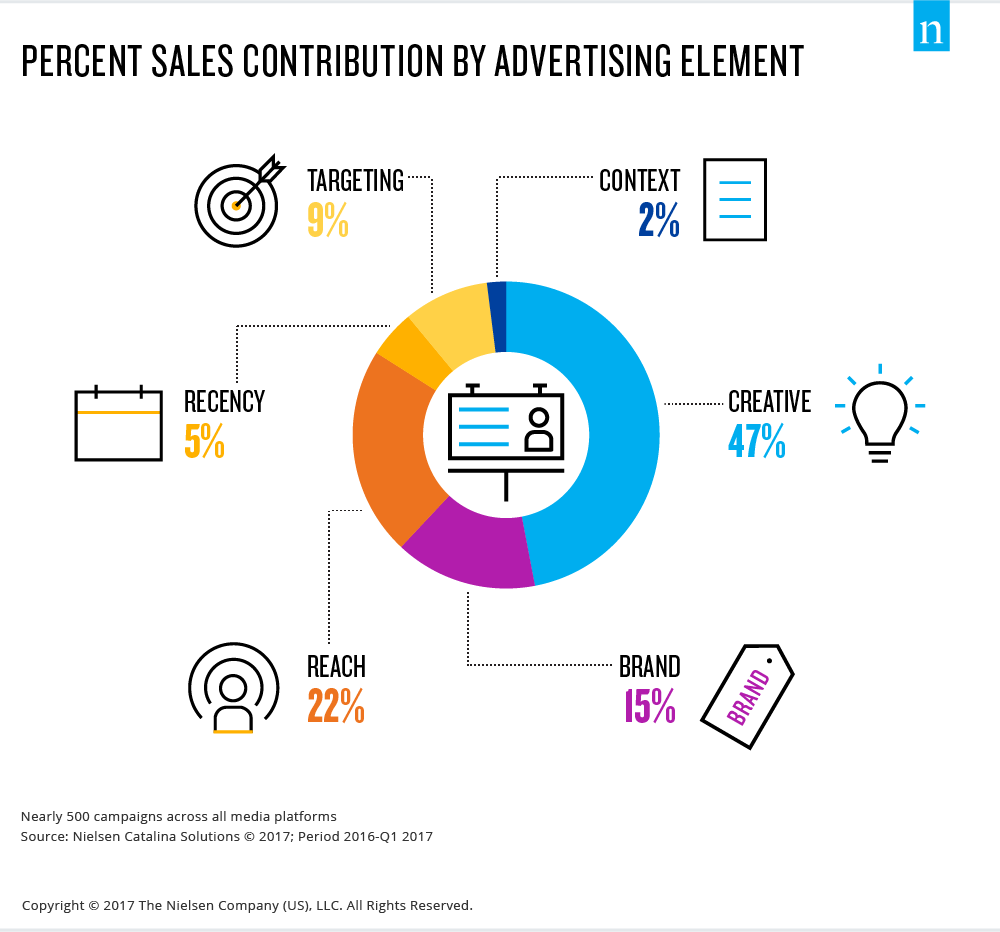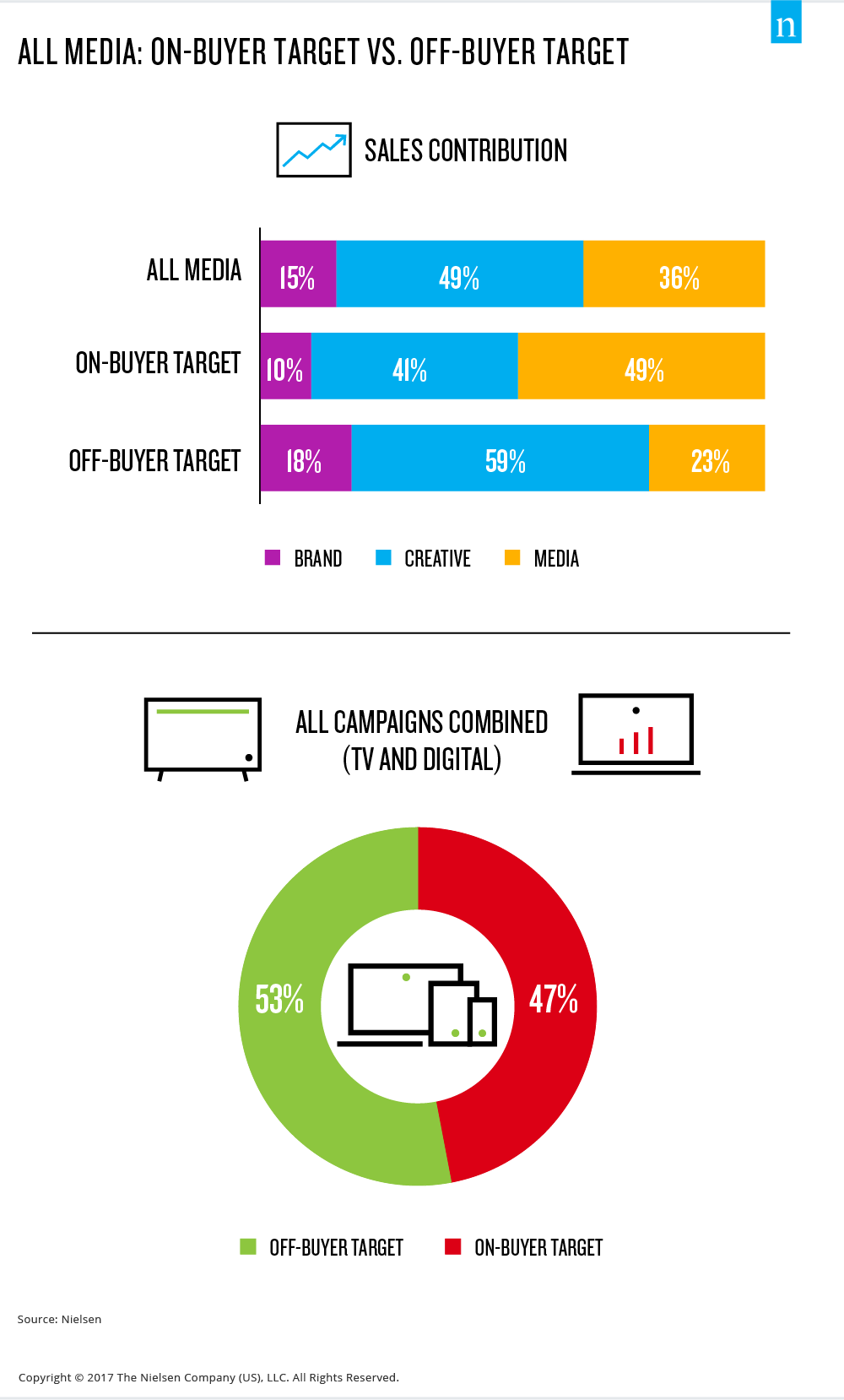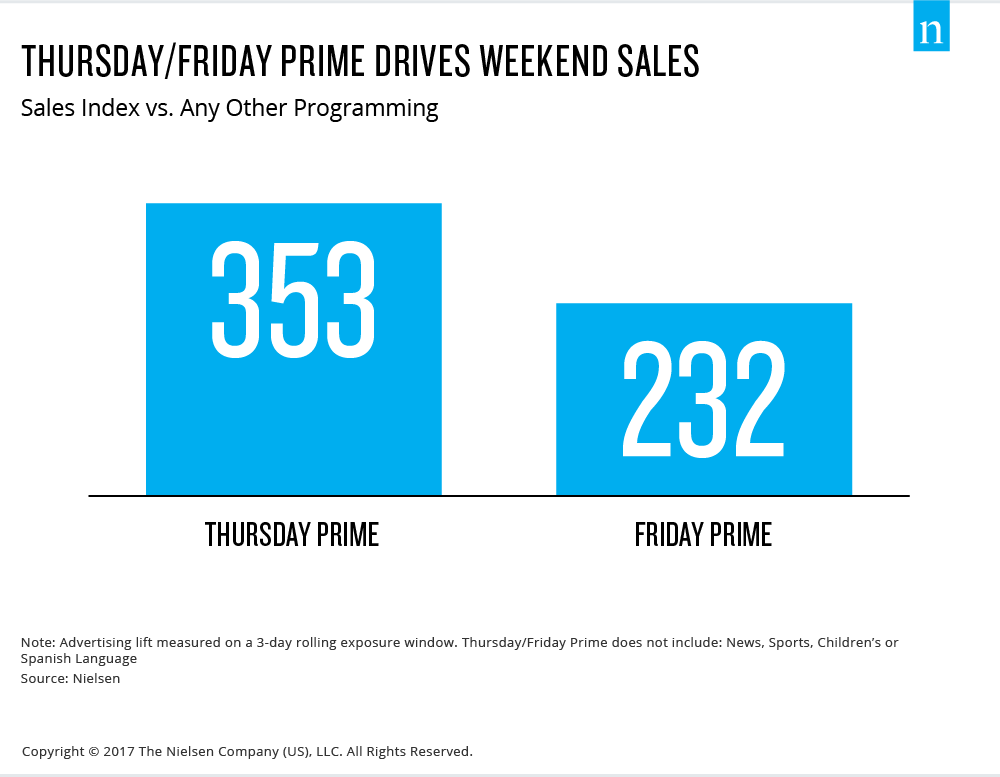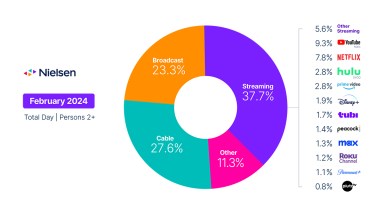For every ad campaign they execute, brand and agency leaders have to decide on an array of variables: how much to spend on creative development and testing; whether to seek high reach or more precise targets; the context for the message; and how to add an element of recency to deliver the ad prior to the next expected purchase. But it wasn’t too long ago that creative was the most important part of the mix by far. It was a pretty simple formula: Good creative sold products, bad creative didn’t. In 2006, Project Apollo found that 65% of a brand’s sales lift from advertising came from the creative.
With the transformation of the advertising industry over the past several years, the balance has shifted. And as a result, it’s important for advertisers to understand how the different levers of advertising affect sales so they can make better, more informed decisions about how to plan their campaigns.
While creative remains the undisputed champ in terms of sales drivers, new research from NCSolutions highlights how the other elements of factor into the overall sales picture. In addition to the five key elements, the research also notes the impact of “brand factors” related to the intrinsic characteristics, such as price and penetration, which also affect the overall result.

Creative is still king
While the equation today involves several factors, good creative is still the most important element. The findings also highlight how media is playing a more important role than ever. Because of new breakthroughs in data and technology, the elements of targeting, reach and recency can significantly affect sales outcome of a campaign. In fact, the effect of media on sales has increased to 36% from 15% over the past 11 years.
Looking at the quality of creative, weak creative results in weak sales lift, and the sales lift is attributed primarily to media. This is true for both traditional TV and digital campaigns. The reverse is true when the creative is strong—sales lift is higher and is affected less by media.
Context and creative—inextricably connected
Context, while it seems to have the smallest overall impact on sales, it is very tightly connected to the specific creative. Context has the potential to provide strong benefits for advertising, though it requires creating content that is properly matched to the surrounding program environment. We believe that the value that was measured is just a small fraction of the potential impact that context can have on advertising.
Campaign targeting falls short of potential
Despite increased conversations about precision targeting and repeated proof that consumers react better to more personalized advertising, less than half of fast-moving consumer goods (FMCG) brands today are doing a good job of reaching category or brand buyers. When a campaign isn’t delivered to a buyer target, the creative has to work even harder to drive sales.

Reach and recency matter
It may seem obvious, but reaching a large number of consumers with advertising is critical to the success of a campaign: only consumers exposed to an ad can be influenced. This also study examined 863 recent cross-media campaigns across all verticals and measured the volume of impressions for each of them, as well as the reach achieved with those impressions. The shape of the curve confirmed a well-known law of diminishing returns: past a certain point, most new impressions end up reaching the same people.
For many years, marketers have used recency theory (the belief that ads are most effective when they appear immediately before consumers are predicted to make a purchase) to gauge when to run their ads. Although theories come and go, the ability to implement recency theory has improved with the rise in popularity of purchase-based decisioning. For products most often bought on a Saturday or Sunday (beer, for example), advertising on Thursday or Friday has a dramatic effect on sales. Together, advertisements delivered on these days deliver almost three times more incremental sales lift than ads running on other days of the week.

Methodology
This information is based on nearly 500 FMCG campaigns that ran in 2016 and first-quarter 2017 on all major media platforms: linear and addressable television, online digital and video, mobile, magazines and radio.
To learn more, download the full report and watch our on-demand webinar.



